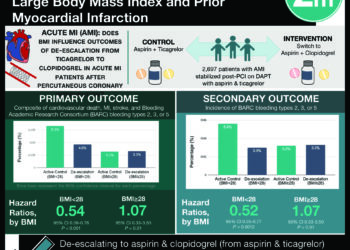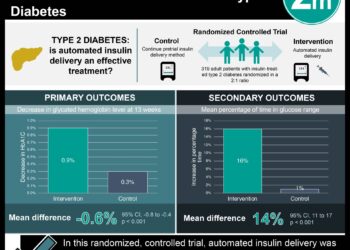[Physician Comment] Early antiretroviral therapy in HIV linked with increased likelihood of CD4+ recovery
Jan 18th- Recovery of CD4+ counts occurred in 64% of participants in the ART group less than 4 months after infection.
 [tabs tab1=”2MM Rundown” tab2= “2MM Full Report” tab3=”About the Authors”]
[tabs tab1=”2MM Rundown” tab2= “2MM Full Report” tab3=”About the Authors”]
[tab]
Image: PD. HIV (green), budding.
1. Recovery of CD4+ counts occurred in 64% of participants who initiated antiretroviral therapy (ART) less than 4 months after infection.
2. No association was found between HIV viral load at the time of initiation of treatment and the recovery of CD4+ counts.
This prospective observational study demonstrated that patients who initiated early-ART therapy (≤4 months of infection) had the highest likelihood of a CD4+ recovery. Those who initiated therapy >12 months after the estimated date of infection had the lowest likelihood of recovery. These two time points likely represent immunologically significant locations in the trajectory curve of CD4+ counts after HIV infection. Four months is when most participants recorded their peak CD4+ count. Thereafter, there is a progressive decline with the lowest CD4+ count usually measured at approximately 12 months. This study showed that initiating ART therapy before the decline in CD4+ counts increased the likelihood of CD4+ T-cell recovery to >900 cells/cm3. Importantly, this effect could sustain immune system function and prevent the morbidity and mortality associated with opportunistic infections.
The drawbacks of this study include a largely male population which fails to observe sex-based differences in HIV-infection. Nonetheless, this study demonstrates that early ART-therapy results in a higher likelihood and faster rate of CD4+ recovery. This study provides strong evidence of a clinical benefit that may occur with early initiation of treatment, particularly in resource-rich settings, but further research (e.g. randomized controlled trials) will be required to reinforce these findings in the future.
Click here to read the study in NEJM
Click here to read the accompanying editorial in NEJM
[/tab]
[tab]
Image: PD. HIV (green), budding.
1. Recovery of CD4+ counts occurred in 64% of participants who initiated antiretroviral therapy less than 4 months after infection.
2. No association was found between HIV viral load at the time of initiation of treatment and the recovery of CD4+ counts.
Study author, Dr. Susan Little, MD, talks to 2 Minute Medicine: Professor of Medicine, UCSD Antiviral Research Center
 “This study identifies a narrow ‘restorative time window’ of approximately 4 months following infection with HIV, during which the immune system is more able to recover to nearly normal function – which we measured by ‘normal CD4 cell counts’ – if ART is started within this time period.
“This study identifies a narrow ‘restorative time window’ of approximately 4 months following infection with HIV, during which the immune system is more able to recover to nearly normal function – which we measured by ‘normal CD4 cell counts’ – if ART is started within this time period.
In the evolving discussion about when to start ART following HIV infection, these data showed that the probability of achieving a normal CD4 cell count (i.e., CD4 >900) on ART was greatest for those who started ART within 4 months of their estimated infection date – and was independent of the CD4 cell count at the start of ART.
These data would support immediate treatment of all HIV infected persons, and highlight the importance of diagnostic screening methods that allow identification of acute HIV infection.”
Primer: Today approximately 1.1 million people are infected with HIV in the United States. Originally described in 1983, following a case series of unusual infections, HIV has claimed nearly 20 million lives. The advent of highly active antiretroviral therapy (HAART) in 1996 dramatically altered the treatment of HIV, and the natural history of this devastating disease has dramatically changed as a result. The goals of HAART therapy are to first suppress HIV replication and therefore improve immunologic function. HAART also serves to decrease HIV-viral load in order to lessen the likelihood of transmission to an uninfected exposed individual. Since initiating HAART therapy, the CD4 count has come to represent the main indicator of immune function in HIV-infected patients; it has been demonstrated to be one of the strongest predictors of survival. It also serves as a clinical marker to initiate chemoprophylaxis for opportunistic infections. There has been much debate about the optimal time to initiate HAART, and it is common to withhold HAART therapy in patients with preserved CD4+ counts, e.g. often a threshold of CD4 count of 500 cells/cm3 is used. In this present study, researchers examined whether the timing of the initiation of HAART has an effect on the likelihood of recovery of CD4+ counts in follow-up.
Background reading:
1. Centers for Disease Control and Prevention: HIV/AIDS
2. Up-to-Date: The stages and natural history of HIV infection
This [prospective, observational] study enrolled 468 persons with HIV-1 infection. They were separated into groups based on whether they received early ART-therapy (≤ 4 months) or late ART-therapy (≥4 months) after initial infection. CD4+ counts rose more rapidly in the early-ART therapy group compared to the late group. Those initiating ART therapy with higher CD4+ counts were more likely to achieve primary or secondary recovery. Viral-load trends were similar among both groups irrespective of CD4+ count. For the late ART-therapy group, it was estimated that each additional month without therapy slowed the rate of recovery by 8% and the likelihood of recovery by 10%. The odds of primary CD4+ T-cell recovery were 65% lower in the late ART-therapy group compared to the earlier group.
In sum: This prospective observational study demonstrated that patients who initiated early-ART therapy (≤4 months of infection) had the highest likelihood of a CD4+ recovery. Those who initiated therapy >12 months after the estimated date of infection had the lowest likelihood of recovery. These two time points likely represent immunologically significant locations in the trajectory curve of CD4+ counts after HIV infection. Four months is when most participants recorded their peak CD4+ count. Thereafter, there is a progressive decline with the lowest CD4+ count usually measured at approximately 12 months. This study showed that initiating ART therapy before the decline in CD4+ counts increased the likelihood of CD4+ T-cell recovery to >900 cells/cm3. Importantly, this effect could sustain immune system function and prevent the morbidity and mortality associated with opportunistic infections.
The drawbacks of this study include a largely male population which fails to observe sex-based differences in HIV-infection. Nonetheless, this study demonstrates that early ART-therapy results in a higher likelihood and faster rate of CD4+ recovery. This study provides strong evidence of a clinical benefit that may occur with early initiation of treatment, particularly in resource-rich settings, but further research (e.g. randomized controlled trials) will be required to reinforce these findings in the future.
Click here to read the study in NEJM
Click here to read the accompanying editorial in NEJM
By [BH] and [RR]
More from this author: World Trade Center rescue workers have an increased incidence of multiple myeloma, thyroid, and prostate cancer, Protease inhibitor-based antiretroviral therapy in HIV-infected children decreases malaria in Sub-Saharan Africa, Low pre-operative Hepatitis C viral load associated with better survival in hepatocellular carcinoma
© 2013 2minutemedicine.com. All rights reserved. No works may be reproduced without written consent from 2minutemedicine.com. Disclaimer: We present factual information directly from peer reviewed medical journals. No post should be construed as medical advice and is not intended as such by the authors or by 2minutemedicine.com. PLEASE SEE A HEALTHCARE PROVIDER IN YOUR AREA IF YOU SEEK MEDICAL ADVICE OF ANY SORT. Content is produced in accordance with fair use copyrights solely and strictly for the purpose of teaching, news and criticism. No benefit, monetary or otherwise, is realized by any participants or the owner of this domain.
[/tab]
[tab]
 Brittany Hasty: Brittany is a 3rd year M.D. candidate at Boston University in Boston, Massachusetts.
Brittany Hasty: Brittany is a 3rd year M.D. candidate at Boston University in Boston, Massachusetts.
 Rif Rahman: Rif is a 4th year M.D. candidate at Harvard Medical School.
Rif Rahman: Rif is a 4th year M.D. candidate at Harvard Medical School.
[/tab]
[/tabs]




